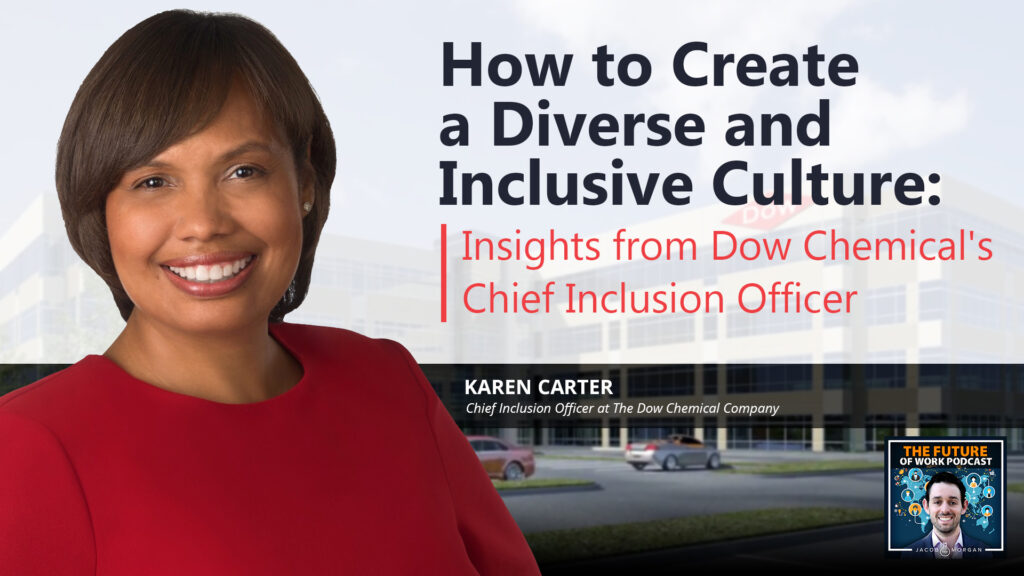Click Here to Subscribe via iTunes
Click Here to Subscribe via RSS Feed (non-iTunes feed)

Karen Carter is the Chief Human Resources Officer and Chief Inclusion Officer at the Dow Chemical Company. She is responsible globally for guiding and directing Dow’s efforts to create a more diverse and inclusive environment and workforce. “My job, in a nutshell, is to ensure that we have an environment that gives everyone a fair chance, those processes, those policies, how we evaluate people, and how we hire people…if you’re not focusing deliberately on including, you will ultimately exclude.”
Karen has 25 years of experience with Dow, but she only recently moved into the HR space. Before assuming her current responsibilities, she held the role of North America Commercial Vice President, Dow Packaging and Specialty Plastics (P&SP). In her role, Karen was a member of the global business leadership team and was responsible for the overall profit & loss of P&SP’s North America region, which is part of Dow’s Performance Plastics Division and represents more than $18.4B in sales.
Karen has a bachelor’s degree in marketing from Howard University and a master’s degree in international business from DePaul University. In 2014, Karen was named to the prestigious Forty Women to Watch Over 40 list for her innovative leadership contributions.
Dow Chemical has been in existence for a little over 120 years. With 50,000 employees around the world, it has revenue in excess of $40,000,000,000. Karen describes the company as a combination of a science and technology organization with a goal to develop and deliver solutions that are essential to human progress. One main focus of Dow is on consumer care, for example ingredients for prescription medications and vitamins. Another one of their markets is packaging, for instance, keeping meat fresh, and as Karen touches on in our conversation, there’s actually technology that is used to make a plastic that enables meat to still be fresh for a few days. The last market that is a main focus is infrastructure – things like roads and bridges and buildings and mega structures like stadiums.
What does diversity and inclusion mean?Karen says, diversity is the collection of all of our unique differences. We talk about diversity across multiple dimensions, and most people tend to migrate directly to race, gender, ethnicity, however, there are other dimensions of diversity – for example, military experience or cultural fluency. Inclusion is the intentional and deliberate action we take to create a culture that embraces and values those differences.
There are several technologies that Dow Chemical is leveraging in the diversity and inclusion space. They use a Workday People Portal that allows them to be much more transparent with information directly to employees and it allows leaders to have easy access to data that helps them make better decisions. For example, being able to see the last 50 promotions a leader has made to ensure that talent is diverse.
As Karen shares in our conversation, we still have a long way to go when it comes to diversity and inclusion in organizations today. Some good strides have been made, but not enough.
What You Will Learn In This Episode:
●Why companies are choosing to hire non-HR people to lead HR
●What does a Chief Inclusion Officer do?
●Typical biases that occur in most organizations
●How to measure D&I
●How D&I impacts engagement
●Technologies Dow Chemical is leveraging in the D&I space
●Why the conversation around D&I is so critical right now
The post How To Create A Diverse And Inclusive Culture: Insights From Dow Chemical’s Chief Inclusion Officer appeared first on Jacob Morgan.



